Symptoms like excessive emergency department surgical admit boarders reveal the inpatient flow challenges hospital teams face every day. To help mitigate these challenges and reduce the number of boarders, an improved focus on efficient discharge practices is a proven strategy to ensure beds are available for incoming patients.
With a goal to safely and efficiently discharge patients as soon as clinically ready, many hospitals launch project-based initiatives to improve discharge practices. But these initial improvements are typically short-lived and fail to sustain long-term results.
Why have project-based inpatient discharge improvement initiatives not worked?
- Like the well-intentioned New Year’s resolutions millions of people make each year, only a small fraction of project-based initiatives manage to succeed. Most simply cannot bring about significant long-term change. An individual might commit to new fitness goals at the beginning of the year, begin a program of diet and exercise, and make progress. Then, with their initial goal achieved, the individual eases back into former habits. The program has not fundamentally changed their lifestyle or fitness approach. Similarly, when hospitals institute new discharge-based initiatives, old habits tend to return, the number and duration of delays creep back up, and eventually, the same challenges resurface.
- Bed huddles are a mainstay of most hospital operations. The concept is sound: cross-functional clinical and administrative team members meet regularly to ensure smooth patient flow, reviewing hospital census figures, anticipated discharges and admissions, and planned transfers. Leaders and staff are meant to identify specific problem areas and determine actions to solve the day’s challenges. Unfortunately, because so many disconnected manual processes are associated with collecting, communicating, and collating the status of each unit and patient, bed huddles often do not meaningfully impact the discharge process. Most typically, everyone reports the status of their areas, but there is little to no focus on synchronizing actions of cross-functional departments to actually make the day a success.
The root of these problems is the massive amount of information maintained manually through written notes, text messages, phone calls, and conversations as well as siloed across clinical and operation systems. It is difficult, if not impossible, to effectively synthesize all relevant information for effective discharge practices and proper capacity planning, and make it visible to all members of the care team so they can make sustainable progress.
The vicious cycle continues as new project-based initiatives are commenced but fail to deliver long-term results, and bed huddles become perceived as ineffective status meetings, so participation in them declines.
A new and effective approach to inpatient discharge improvement
For hospital leaders today, the advent of intelligent automation, which uses artificial intelligence, workflow automation, and streamlined communication, delivers an operations management platform that provides wide-ranging past, present, and future insight into hospital operations in a way manual processes simply cannot. Hospital teams receive accurate forecasts of patient census and see the units most likely to be impacted with capacity challenges. Data can be viewed at the hospital enterprise level or segmented to a specific unit. The most likely patient discharges are identified and prioritized so that action can be taken where it’s most impactful.
These intelligent automation platforms, such as iQueue for Inpatient Flow, provide succinct and targeted recommended actions across multi-disciplinary teams. Care progression and discharge barriers are easily documented and communicated, and everyone involved is aware of the actions needed as well as the current status of those actions.
“[The platform’s] predictions have provided remarkable value in identifying high-priority patients, saving us considerable time prioritizing today’s patient discharges and enabling us to pre-plan tomorrow’s discharges.”
– Dr. Brian Boggs, Vice President, Medical Affairs, Health First
Implementing an operations management platform such as this helps place all hospital stakeholders on the same page. Cross-functional teams can anticipate what’s coming next, communicate any barriers, and document care progression steps in a single system. When the system is integrated into the daily culture of the organization, hospitals can move beyond project-based initiatives, bed huddles can become more productive and impact results, and teams can practice a truly sustainable method for continuous performance excellence successfully.
Doing so is not possible by adding technology alone, however. Hospitals must use the operational platform as a tool to change their whole approach. Insights from hospital leaders across the country, the real-world experience of our internal clinical team, and the exploratory research and user insight by our product development team point to five key recommendations to create system-wide culture change and ensure sustainable discharge performance improvement.
Five steps to transforming the approach to discharge performance improvement
1. Assign a day-to-day operational performance leader
The performance leader is a designated individual who owns the improvement initiative and is responsible for the daily coordination of care by the teams on the ground. This cannot be a ceremonial title. This individual must have real authority or influence, be empowered to gather solid, reliable data from individual areas, break down barriers to foster collaboration, and be provided the tools necessary to design, test, and implement improvements.
2. Develop a coordinated system-wide patient discharge process
The organization as a whole must view the patient discharge process as a connected approach throughout each patient’s care progression, as well as understand the impact to the enterprise as a whole. Steps in this process, including confirming and performing labs, giving discharge approvals, and ensuring transportation and homecare, cannot be managed in a silo. Consistent, sustainable discharge practice performance excellence demands a system-wide process that must be coordinated, proactive, and constantly adapting.
3. Implement a system for accurate predictive insights
With the right people and processes in place, the organization must deliver the right data in advance of a capacity crisis to enable teams to take action. Understanding anticipated census, combined with early identification of the most likely discharges, allows all stages of care progression to be coordinated and connected. This allows everyone involved in discharge management and capacity planning to make a meaningful impact to ensure that patient length of stay is not unnecessarily extended, and beds are available for anticipated incoming patients. This step relies on a solution like iQueue for Inpatient Flow to provide needed information.
4. Identify patient discharge barriers and recommended actions for each stakeholder
With predicted census known and the most likely discharges identified, the organization must have a system that delivers real-time information and updates, provides specific recommended actions at the system and unit level to address and eliminate barriers to discharge (i.e., classification, outstanding tests, post-acute needs, and placement), and offers coordinated, cross-functional communication so everyone knows what to do to ensure success.
5. Eliminate communication silos
To reduce delays and duplicate efforts, manual, untimely, and inconsistent communication methods like phone calls, written notes, and emails must be eliminated. All cross-functional areas must work from a single source of truth to identify, understand, and address critical priorities, their specific action items, the current status, timelines for completion, and how events in one area affect all the others.
Improving patient discharge with intelligent automation
AI-based operational management systems like iQueue for Inpatient Flow are available to help hospitals and health systems of all sizes to address each of these recommendations. These systems deliver intelligent automation embedded within current operating procedures to provide predictive insights, recommend the most meaningful actions, streamline how work is done, and create a closed-loop process across the entire organization. AI-driven hospital operations management systems are no longer a future-state promise; they are working today to improve performance in hospitals across the country.





